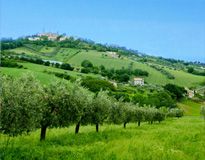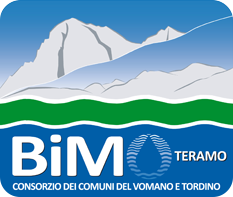The tradition of ‘le virtù’(virtues) is with no doubt the oldest and rooted between Teramo culinary traditions. It dates back to the 1800s and is linked to the festivities of the peasant civilizations during the period called ‘Calendimaggio’ in which, after the winter season, the remains of the pantry, such as dried legumes, ham bones and broken dry pasta, were mixed with the first fruits of the spring. It is, therefore, a first course dish based on legumes, vegetables and pasta of various kinds whose Preparation is very long and laborious and born and developed by imagination and virtuosity of good housewives who spent hours in the kitchen to prepare this dish to serve to the family to celebrate the beginning of spring with the hope that it would bring a plenty harvest. Even today the virtues are consumed, according to the tradition, during the celebrations of the first of May.
Curiosity: According to the legend, the ‘Virtù’ should be cooked by seven virgins for seven hours using seven types of pasta, seven types of legumes and seven types of vegetables. The number 7 represents the seven Christian virtues.
There are many other hypotheses on the origin of the name of this dish: the ‘Virtù’ would indicate the legumes and vegetables, gifts of the earth, the result of hard work and the hard work of the farmers. According to others it is a tribute to the virtuous capacity of the housewife towell manage the dispensation until the end of winter.
Preparation
The evening before cooking: clean the vegetables, soak the pork rinds in hot water with a bone ham (it is important that it is in excellent condition) and put the dried vegetables separately in water. The next day cook the legumes in separate pots, each with some rind cut into cubes. Mix the meatballs with the minced meat, adding salt, pepper and nutmeg. Pan-fry artichokes and zucchini and keep them aside (they will be added at the end of the process).
Cut the ham, potatoes, carrots and courgettes into cubes, chop all the vegetables finely (it is recommended to do not overdose the various vegetables, as it would risk ruining the harmony of flavors of the "Virtù" and make them look like a common minestrone). Put the oil, the butter, the ham, the lard, the peas, the broad beans, a chopped artichoke and a stalk of celery in a very large pot. Add the vegetables, potatoes, carrots, courgettes and meatballs together with chopped garlic, onion, parsley, thyme and marjoram and finally add the spices (nutmeg, a spoonful of pepper, marjoram, cloves and wild fennel). Let it cook for 15 minutes and then add the tomato pulp and let it simmer for 5-10 minutes.
Mix the vegetables with a part of their cooking water (the remaining part must be filtered and stored to be added at the end). Cook for other 10 minutes.
Prepare 3 different types of dough: yellow (with eggs), green (with spinach) and red (with tomato). Cut the dough in different shapes (tagliolini, fiocchetti, large squares, etc.). Cook in salted and boiling water. Add some agnolotto and tortellino to the pasta (if you prefer). Cook some durum pasta separately. Once cooked, drain all types of pasta and stop the cooking process with cold water. Add all the Ingredients in the pot with legumes and vegetables, add the remaining cooking water of the vegetables, mix well and remove it from heat. Add lot of Parmesan, artichokes and fried zucchini and stir it occasionally. Serve it after about two hours (the mixture must be rather compact). Enjoy your meal!
Ingredients (for 6 people)
It is very difficult to determine the doses because of the huge quantity of the Ingredients. Anyway, we will give some general indications, valid for the number of 6 people: 250 gr. of minced meat, 250 gr. of prosciutto, 100 gr. of lard, 50 gr. of butter, 1 glass of olive oil, 1 nutmeg, 4 cloves, parmesan cheese, 4 eggs, 250 gr. of durum pasta and, if you prefer, a little of tortellini and agnolotti, half a bottle of tomato (or a box of peeled tomatoes). Dried legumes (beans, chickpeas, lentils); fresh vegetables (peas and broad beans); various vegetables (carrots, courgettes, potatoes, beets, endive, escarole, lettuce, cabbage, cauliflower, turnips, borage, chicory, spinach, fennel, garlic, onion, dill - sort of wild fennel, indispensable herb for the Preparation of this dish -, marjoram, sage, "pipirella" - sort of thyme, found in Teramo -, celery, parsley, artichokes); in addition, eggs, ham, oil, butter, pork rind, beef, nutmeg, pepper, cloves, pork lard, parmesan, flour, durum pasta of various qualities and, if you prefer, tortellini and agnolotti.
 en
en 













